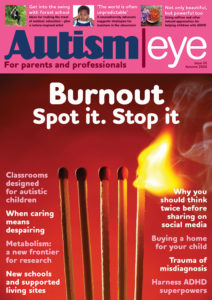 By Ifigeneia Mourelatou BSc, MSc, MBPsS
By Ifigeneia Mourelatou BSc, MSc, MBPsS
Autism Practitioner & ESDM Specialist at Re:Cognition Health
www.recognitionhealth.com

Often, parents feel the pressure to buy expensive materials, toys and resources to enhance their child’s learning and development. However, the following practices can be applied by any parent of young children, regardless of financial status and time availability.
-
Walking barefoot.
Several studies have highlighted how babies and toddlers walking and exploring barefoot can enhance their balance and gross motor skills. Recently, many also refer to ‘earthing’ as a great way to de-stress and unwind.
-
Baby-proofing your home.
This will allow freedom and exploration for your little one in a safe way. It will also likely decrease the negative words such as ‘no’, ‘don’t’ and ‘stop’ that parents often use to prevent children from hurting themselves when exploring their environment. Decreasing the hazards and the possibility of them bumping or hurting themselves will allow for a calmer parent and a curious and adventurous child, with minimal accidents.
-
Lots of outside time every day.
Most people feel more relaxed and happier when they go to the park after a long day of work. Your child might feel the same way! Research has systematically shown that breathing fresh air in combination with physical exercise strengthens the immune system, regulates mood, and contributes to a healthy lifestyle. Some neurodivergent children may require even more physical activity outdoors to regulate their energy levels or decompress.
-
Arrange playdates.
With your child’s nursery/daycare classmates, your neighbours or family members. The best thing would be to have these playdates with the same children quite often, so your child gradually becomes more comfortable and establishes a bond with them, thus creating a safe space to practise social and play skills.
-
Be aware of your space set-up.
Tidying up can be tricky for a busy household, but when it comes to children’s toys, famous education methods, such as the Montessori, practically tell us ‘less is more’, meaning that a child who has 24/7 access to numerous toys will likely jump from one activity to another and rarely expand their play ideas. By decreasing the number of toy options available in the room (for example, by using a closed cupboard or closed boxes and rotating the toys) you may help your child prolong each activity and enhance their imagination.
-
Use of household items for learning through play.
Any of the following household things can be used for creative play: blankets, sheets, scarves, pillows, cutlery, towels, pots, pans, cups, straws and so forth. Joint activities, such as cooking simple recipes together (for example, making a healthy cake or washing and cutting vegetables for a salad), can be as much fun as it can be learning and development.


















